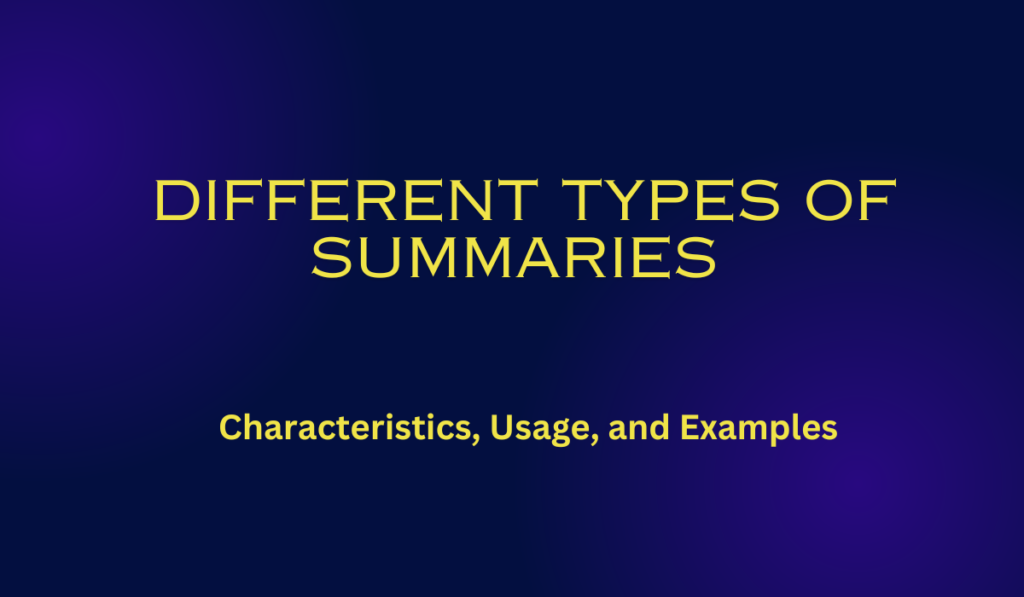Explore the various types of summaries, including executive summaries, book summaries, article summaries, and more. Understand the unique characteristics of each type, when they are commonly used, and find examples to illustrate their purpose.
Different Types of Summaries: Characteristics, Usage, and Examples
Introduction: Summaries come in different shapes and sizes, each serving a specific purpose. In this article, we will explore the various types of summaries, their unique characteristics, when they are commonly used, and provide examples to illustrate their purpose. Let’s dive into the world of summaries!

- Executive Summaries: Characteristics: Executive summaries are concise summaries of longer documents or reports. They capture the main points, conclusions, and recommendations, allowing busy executives and decision-makers to grasp the key information quickly. Usage: Executive summaries are commonly used in business settings, such as board meetings, project proposals, and strategic planning sessions. Example: An executive summary for a business plan would provide an overview of the company’s goals, market analysis, financial projections, and key strategies.
- Book Summaries: Characteristics: Book summaries provide a condensed version of a book’s content, highlighting the main plot, characters, and key themes. They aim to give readers a glimpse into the book’s essence without revealing all the details. Usage: Book summaries are useful for readers who want to get an overview of a book before deciding whether to read it. They are commonly found in book reviews, online bookstores, and study guides.
Example: A book summary for “Harry Potter and the Sorcerer’s Stone” would introduce the main characters, the magical world of Hogwarts, and the quest to defeat the dark wizard, Lord Voldemort. - Article Summaries: Characteristics: Article summaries provide a condensed version of an article, capturing the main points, arguments, and findings. They help readers quickly understand the article’s content without reading the entire piece. Usage: Article summaries are commonly used in academic settings, research papers, and online platforms where multiple articles are curated.
Example: An article summary on climate change would outline the causes, impacts, and potential solutions to address global warming and its effects on the environment. - Film/TV Show Summaries: Characteristics: Film/TV show summaries provide a brief overview of the plot, major characters, and key events in a movie or TV show. They give viewers an idea of what to expect without revealing all the twists and turns. Usage: Film/TV show summaries are commonly used in movie reviews, streaming platforms, and TV show guides.
Example: A film summary for “Toy Story” would introduce the main characters, Woody and Buzz Lightyear, and their adventures as toys who come to life when humans are not around.
Conclusion: Different types of summaries serve unique purposes in various contexts. Executive summaries help decision-makers grasp key information efficiently, book summaries offer a sneak peek into the essence of a book, article summaries provide condensed versions of research papers, and film/TV show summaries give viewers an overview of the plot. By understanding the characteristics and usage of each type, we can make informed choices and access information more effectively.
Read Related Articles:
Unlock the Power of Summaries: Dive into a World of Knowledge with DefineSummary.com
